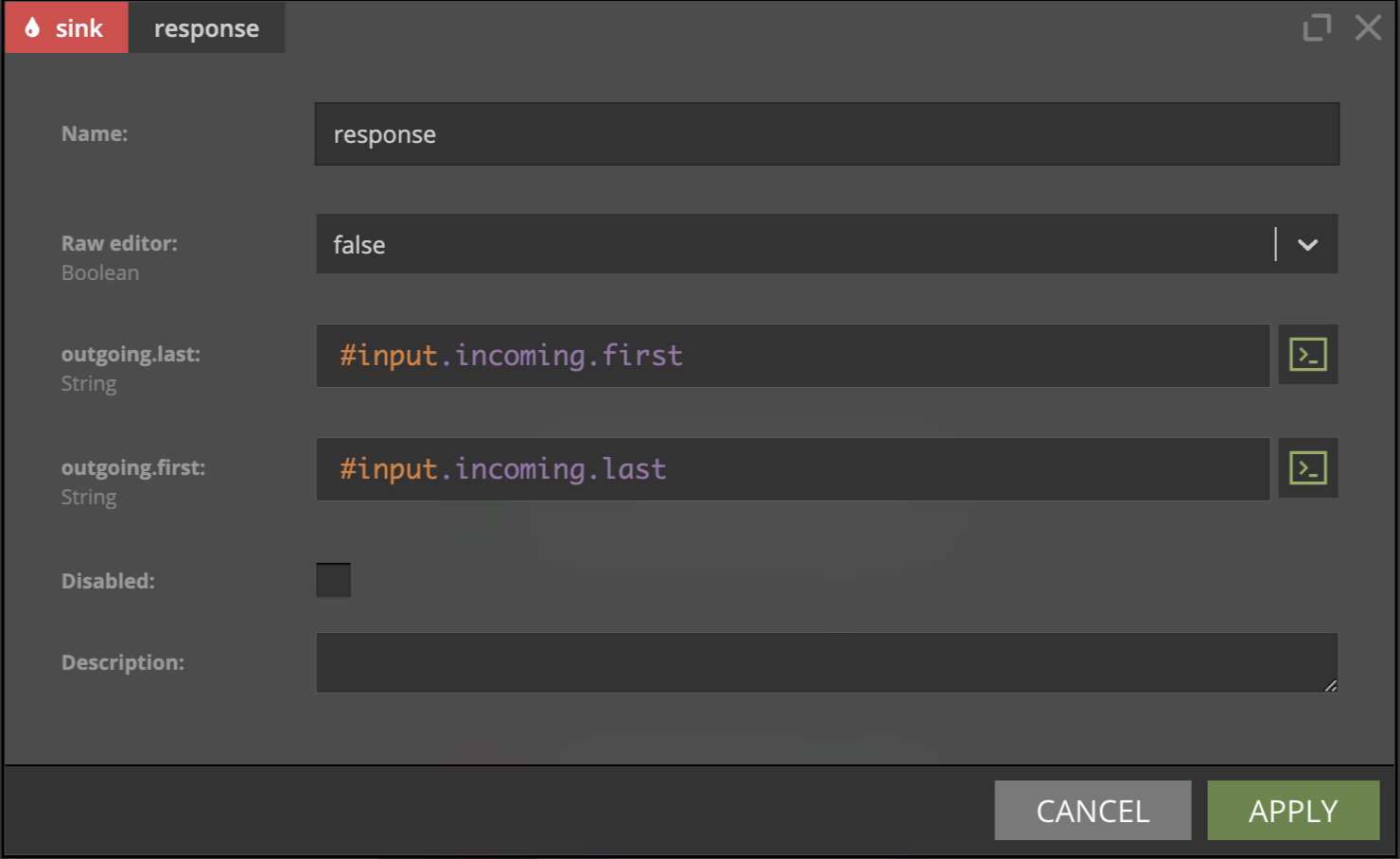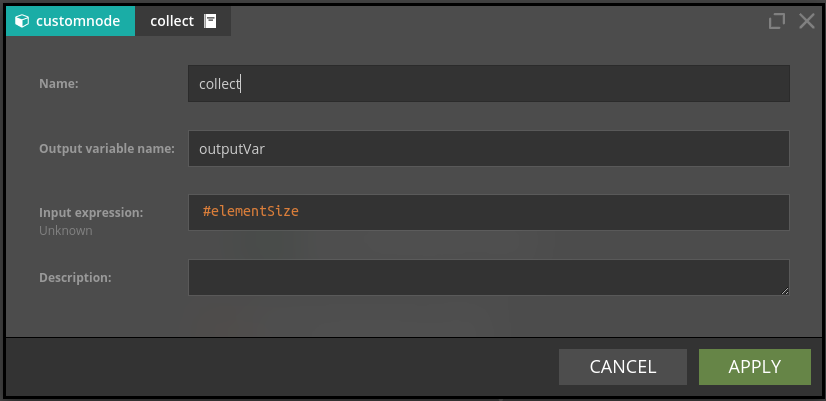Request-Response
This page covers topics specific to the Request-Response processing mode. Please read the common introduction before proceeding.
Concepts
Slug
In Request-Response processing mode scenario deployment creates a resource which can be used to communicate with a scenario.
With slug property author can configure what is a path of that resource.
Schemas
Unlike in the Streaming processing mode, there is no Schema Registry which would store data schemas - request and response schemas in our case. Still, the schema of the request and response ("input" and "output") need to be declared to Nussknacker; they are defined alongside the scenario (as the scenario property). The "language" used to define schemas is called JSON Schema. Nussknacker uses those schemas to understand how the request and response should look like, assist you with hints and validate expressions you write.
Click Properties icon on the right panel of the scenario to define input and output schemas.

Scenario response in scenarios with split and for-each nodes
If parallel branches end with response nodes and more than one response is generated (e.g there is no filtering after split), the only response which is returned is the one which was chronologically generated first. There is no way to determine which one will be generated first. If all responses are important to you, you need to take additional measures - use union node to merge branches and collect node to collect data records coming from individual branches into a list.
If you use for-each node and need to collect all the results into a list of values, use collect node.
Finally, if no response is generated (e.g. after filtering), an error is returned (in the future this behavior may change).
Request - Response Specific Components
Source
The request source does not take any parameters - just drag it onto the scenario authoring canvas.

Sink
The response sink configuration form shows a list of fields defined in the output schema.

If, instead of filling separate autogenerated fields, you prefer to define the whole response as one expression
containing value of the scenario response, you can do that by switching Raw editor to true.
When using the Raw editor, you can choose
the validation mode.
If you prefer to define the whole scenario response as one expression instead of filling individual fields, you can do
that by setting Raw editor to true.
Collect

As described in the Concepts section, there are cases when during single invocation of the request - response scenario, multiple data records start to "flow" through the scenario. Just to reiterate, this situation happens in the following cases:
In such cases, the collect node provides a convenient way of collecting all these records into a list. If data records
are in parallel branches, a union node should be used to merge the branches first.
Collect node takes two parameters:
- Input expression - this expression will be evaluated for all data "records" which "flow" through the scenario and will be collected into a list.
- Output variable name - name of the variable which will store the above-mentioned list.
Example:
- For-each node executes on a list
{"one", "two", "three"}, the output variable isElement. - The subsequent variable node defines
elementSizevariable;#Element.length(returns length of the string) is an expression defining this variable. Because this node is "after" the for-each node, it will execute as many times as there are elements in the list on which for-each node executed, producing 3 #elementSize records. - Collect node collects all occurrences of
#elementSizerecord into a list.
The output from collect node will be a list: {3, 3, 5}.
Collect is designed to be used in simple collect cases, it might not work as expected in nested structures (like for-each inside for-each)